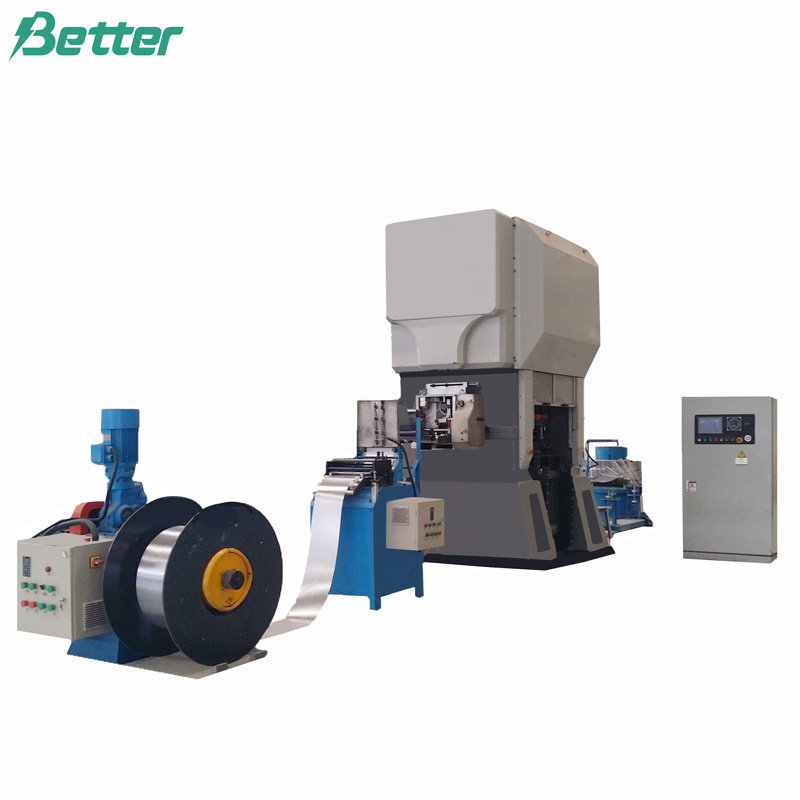
Inside the Automated Punching Line Machine for Battery Grids
2025-05-13 16:00When crafting high-performance lead-acid batteries, the unseen internal structure – the grid – is absolutely critical. It forms the skeleton that holds the active material and conducts the current. Producing these grids with unwavering consistency and speed, especially at scale, demands specialized technology. This is where the Punching line machine takes center stage within the broader battery assembly line.
So, what are we talking about when we say Punching line machine? Think of it not as a single piece of equipment, but as a highly coordinated system. Its mission is to transform raw lead strip material into precisely formed battery grids through an automated, continuous punching process.

Orchestrating Precision: How the Line Works Together
The real power of this system comes from how its different sections operate in perfect harmony. While specific configurations can vary, a typical setup includes several key stages working in sequence:
Initiating the Flow (Unwinding): Everything starts here, as large coils of lead strip are smoothly unwound and fed into the line, providing the essential raw material.
Ensuring Continuity (Lead Strip Welding): To keep production running without constant stops and starts, a welding station often joins the tail end of one coil to the start of the next. This is crucial for maintaining high throughput.
Preparing for Perfection (Leveling & Buffering): Before the main event, the lead strip passes through a leveling unit. This crucial step flattens the material, removes any kinks, and maintains proper tension, guaranteeing it enters the punching stage perfectly prepared for precision work.
Pinpoint Positioning (Lead Strip Feeder): Accuracy is paramount. A dedicated feeder advances the lead strip into the press with meticulous timing, ensuring each punch occurs exactly where intended.
The Defining Moment (Press & Punching Mold): This is the heart of the transformation. A powerful press, equipped with a custom-designed punching mold, stamps out the intricate grid pattern from the lead strip. The design of the mold dictates the final grid specification, making its quality essential.
Managing the Output (Horizontal Winding): Once the grids are punched, this section efficiently handles the processed material – potentially winding the continuous strip of connected grids or managing the leftover lead framework (scrap).
Unified Command (Electrical Control System): The entire sequence is orchestrated by a central control system. This 'brain' synchronizes the speeds and actions of all components, ensuring the Punching line machine functions as one cohesive, high-performance unit.
Why This Integrated Approach Matters
Moving to an automated punching line brings significant advantages over older, more fragmented methods:
Unmatched Consistency: Automation minimizes human variability, leading to grids with highly consistent dimensions and quality.
Boosted Throughput: Continuous operation means significantly faster production rates compared to manual or semi-automatic processes.
Optimized Material Use: Precision feeding and punching minimize waste.
Reduced Labor Needs: Automation reduces the manual handling required along the line.
Quick Insights You Might Need:
What's the end product? Precisely formed grids/plates, primarily used in lead-acid batteries.
Is it one machine or several? It’s a line – multiple specialized units (unwinder, welder, leveler, feeder, press, winder) working together.
What's the benefit of connecting them? Continuous, automated flow boosts speed, consistency, and efficiency across the battery assembly line.
How accurate is it? High accuracy is achieved through precise leveling, feeding, and the quality of the press/mold combination.
Thinking about the battery making machine price? While a significant investment, the cost is evaluated against the substantial gains in production speed, grid quality, material efficiency, and lower labor costs, making it a strategic choice for competitive lead-acid battery manufacturing.
In Short:
The Punching line machine is far more than a simple press. It’s a sophisticated, integrated system engineered for the express purpose of producing high-quality battery grids efficiently and consistently. By automating the journey from raw lead strip to finished grid, it plays a vital role in streamlining the battery assembly line and forms the foundation for reliable, high-performance lead-acid batteries. Investing in such technology is key for manufacturers focused on quality and competitive production.
